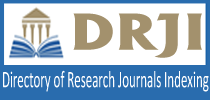Author Guideline
Authors who intend to submit their work for the Lembaran Masyarakat: Jurnal Pengembangan Masyarakat Islam are encouraged to follow the following guidelines:
- Articles should be original, research-based, unpublished and not under review for possible publication in other journals.
- Papers should discuss the themes of social development, or other related themes, written in English; it is written with Californian FB with the font size of 12 in body.
- The article contains: title, author's name (accompanied by the author's identity and the author's affiliation, email and mobile number), abstract (followed by keywords), introduction (includes background of the problem, brief literature review, research problems, and research objectives), research methods, discussions, conclusions and bibliography (containing references referred to in the description).
- Article should be written in Indonesian, Bahasa and/or English between approximately 4000 – 6000 words, not include title, abstract, tables and figures, notes, references, and appendices intended for publication.
- All submission should be in OpenOffice, Microsoft Word, RTF, or WordPerfect document file format; and the papers must be used Template of Lembaran Masyarakat: Jurnal Pengembangan Masyarakat Islam.
- Bibliographical reference must be noted in bodynote and/or footnote, and bibliography according to American Psychological Association (APA) Style 7th Edition.
- Reference sources are recommended using the latest manual and digital library materials (last 5-10 years), and suggested to use a reference manager at styling the footnote and the bibliography, such as Zotero, Mendeley, et cetera.
- All submitted articles that are violate our guidelines on formatting or length will be rejected without review.
- Therefore, authors must log in before submit their article in: Online Submissions
Bibliography:
Akbulut, O., & Ekin, Y. (2018). Reflections of Hajj and Umrah pilgrimage on religious stores in Mugla-Turkey. International Journal of Religious Tourism and Pilgrimage, 6(3), 18–29.
Austin, D. (2009). Fatty acids, breastfeeding and autism spectrum disorder. E-journal of Applied Psychology, 5(1), 49-52. Retrieved from http://ojs/lib.swin.edu.au/
Burhani, A. N. (2017). Geertz’s Trichotomy of Abangan, Santri, and Priyayi: Controversy and Continuity. Journal of Indonesian Islam, 11(2), 329–350. https://doi.org/10.15642/JIIS.2017.11.2.329-350
Buzan T. (2007). Mind maps. September 3, 2009, retrieved from http://www.buzanworld.com/Mind_Maps.html.
Fung, M. (2006, December 12). Asthma rates are increasing. Winnipeg Free Press, pp. C4.
Harris, M. (2011, August 16). Grades improve if classes start later, studies find. The Calgary Herald. Retrieved from http://www.calgaryherald.com/
Kasali, R. (2017, November 18). Disrupsi Akan Semakin Kuat. Kompas.
Leedy, P. D., & Ormrod, J. E. (2010). Practical Research: Planning and Design (9th ed.). New York: Pearson.
Mancusa, S., & Viola, A. (2015). Brilliant green: the surprising history and science of plant intelligence (J. Benham, Trans.). Washington, DC: Island Press.
Moris, T. (2006). Social Work Research Methods Four Alternative Paradigms. California: California University Press.
Shinn, M. (2007). International homelessness: Policy, socio-cultural, and individual perspectives. Journal of Social Issues, 63(3), 657–677. https://doi.org/10.1111/j.1540-4560.2007.00529.x
Smith, F. M., & Jones, W. (2004). The college student. In C. Wood & M. Meyer (Eds.), Cross-cultural education (pp. 75-105). London, Canada: MacMillan.
TransCanada. (2006). Annual report. Retrieved from http://www.transcanada.com/investor/annual_reports/2006/media/pdf/TransCanada_2006_ Annual_Report.pdf
Lembaran Masyarakat: Jurnal Pengembangan Masyarakat Islam has been indexed by:



















.png)
.png)
.png)

.png)



